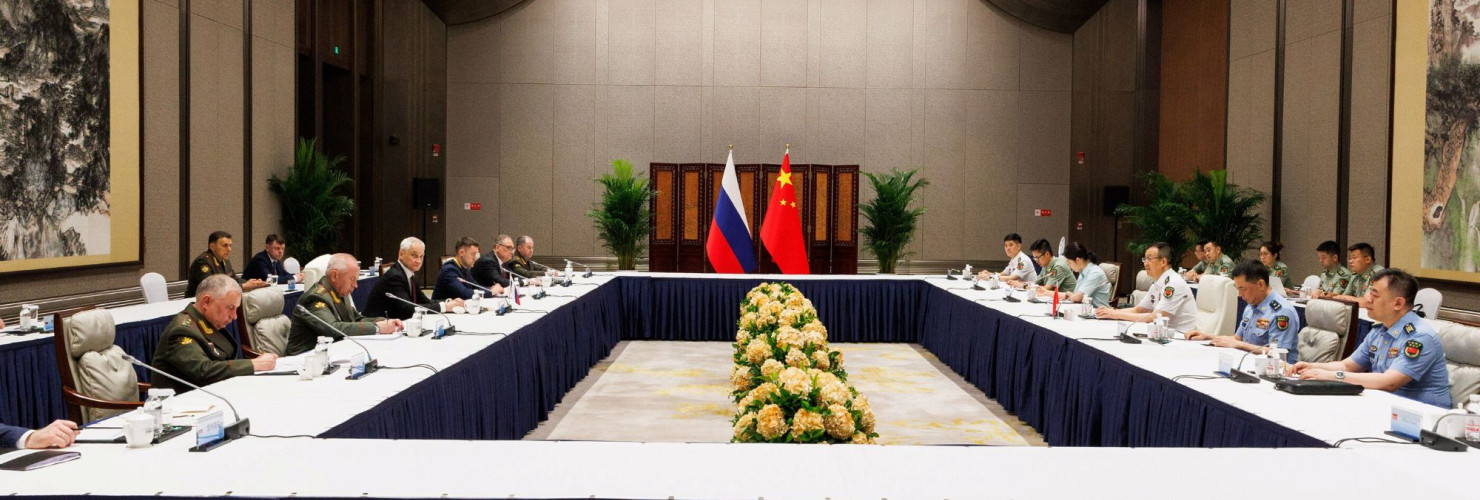

China–Russia military cooperation targeting Taiwan could link the European and Asia–Pacific theaters
Plans for China and Russia to cooperate in air-maneuver operations targeting Taiwan are the latest step in a deepening partnership that is likely to see defense planners rethinking strategies for the European and Asia-Pacific theaters, says Claus Soong.
China’s contract for Russia to equip and train an air battalion, reported by the UK’s Royal United Services Institute (RUSI) in September, goes beyond the two partners’ long history of military cooperation and sets sights on Taiwan. Although China and Russia are not formal allies, the current plans to cooperate on potential invasion scenarios is a degree of alignment that edges them closer to an alliance.
In their latest joint statement in May 2025, China and Russia called for enhanced cooperation in military technology, coordination, and expanded joint naval and aerial exercises to “counter traditional and non-traditional threats and challenges effectively” and to “maintain global and regional security.” Their military cooperation is a core component of a broader strategic coordination aimed at safeguarding their national interests in the international arena – sovereignty and territorial integrity in particular – and, in China’s case, the issue of Taiwan.
China–Russia alignment links Asian and European theaters
Their enhanced military cooperation alters not only strategic calculations and defense planning in Taipei, Tokyo, and Washington, but also in Europe. For Taiwan, Japan, and the United States, a more aligned China and Russia, along with North Korea, could directly challenge the northern and southern approaches of the first island chain, which runs from Japan to the Philippines and is considered the first line of defense against a potential Chinese expansion into the Pacific by the US and its allies.
In a Taiwan contingency scenario, Moscow could exert pressure on and contain Tokyo through the Sea of Okhotsk, the Sea of Japan, and the East China Sea, areas that have become hotspots for China–Russia joint naval and aerial exercises in recent years.
Beijing’s growing influence in the Pacific could provide Moscow with time and space to expand its own influence in Europe while Europe’s most important ally, the United States, is drawn into the Western Pacific. This shifting dynamic has been evident since the start of the second Trump administration, as Washington has withdrawn some of its troops from Europe and called on Europe to take greater responsibility for its own defense and support of Ukraine. Under intensifying US-China competition, Asia has been further elevated among US defense priorities, and the deepening China–Russia military cooperation has increased pressure on the European security architecture for greater self-reliance.
Air-maneuver capabilities are key to China’s invasion plan
Air-maneuver operations are an essential element of Beijing’s invasion plans. Ultimately, troops must land in Taiwan to fight and occupy territory. The key questions are how they would be transferred to Taiwan and to what end. Compared with a Normandy-style amphibious landing, air-maneuver operations could, in theory, reduce casualties. A successful operation could help to take quick control of infrastructure and institutions and dissolve resistance, with fewer lives lost. This would align with the stated wartime ideal of the People’s Liberation Army (PLA): “Preferably no one die; keep fatalities to minimum; and deaths, if unavoidable, limited to military personnel.”
While developing air-maneuver capabilities is necessary, it is not sufficient for Beijing’s invasion planning. Taiwan’s geography – the width of the Strait, sea states such as waves and tides, and dense ground-based air-defenses and artillery – makes airborne insertion of troops, and especially heavy armor, extremely challenging; it would require near-complete air superiority. The number of soldiers and equipment that can be delivered by air is far smaller than what would be required to conquer and hold Taiwan and impose Chinese rule.
Russian support boosts China’s air-maneuver capabilities
The new level of military cooperation demonstrates how Moscow could assist Beijing in preparing for a Taiwan conflict. Drawing on its own battlefield experience in Ukraine, Russia is helping the PLA acquire critical capabilities for achieving control over Taiwan in a wartime scenario. Such cooperation could expand the PLA’s options for delivering forces across the Strait, including developing more robust air-maneuver capabilities for penetrating intense ground-based air-defense fire so they can deploy troops, tanks, and vehicles. The PLA could employ air-maneuver operations to insert special forces for mission-specific objectives – such as a decapitation strike or the seizure of major transport hubs – which, if executed successfully, could paralyze Taiwan’s command system and achieve key strategic goals in the invasion at lower cost.
Russia’s assistance could provide valuable experience to help China develop more robust air-maneuver capabilities, especially dropping tanks and vehicles. In theory, these enhanced capabilities would give the PLA greater flexibility and allow for quicker, more dynamic deployments during a potential Taiwan invasion scene.
Aligned and allied yet to be?
Although Beijing and Moscow are not formal allies, their alignment has evolved from rhetoric to more direct action, increasingly threatening to become a destructive force to global order and stability. It remains unclear what posture Russia would take in the event that China invaded Taiwan, but it is likely that the Russia-China alignment seen in Ukraine would continue in a Taiwan scenario. Both countries are already cooperating in contingency preparation, and such coordination could extend into the execution phase.
This does not necessarily imply a full-scale alliance comparable to NATO or the US and Japan, but rather a form of strategic coordination that, as NATO Secretary General Mark Rutte noted, means “we really have to look at them as one.” In a Taiwan contingency, China could pressure its junior partner, Russia, “to move against NATO here, to keep us busy.” This alignment demonstrates why the Indo-Pacific and Euro-Atlantic can no longer be viewed as separate theaters.
This analysis is part of the China-Russia Dashboard, a collaborative research effort of the Centre for Eastern Studies (OSW), MERICS, and the Swedish National China Centre (NKK) and Stockholm Centre for Eastern European Studies (SCEEUS) at the Swedish Institute of International Affairs (UI). Explore the project here.


